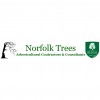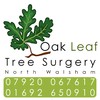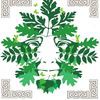
Since 2002 Norfolk Trees has provided professional tree surgery services to a wide variety of clients. We are located just outside Norwich we cover the whole of Norfolk and Suffolk. Based just outside Norwich, Norfolk Trees have many happy customers from Norwich and the surrounding areas. We provide a full range of tree surgery services and carry out work across Norfolk, Suffolk and Cambridgeshire.
Pollarding is the removal of all the tree limbs leaving just a trunk approximately 2.5 metres in height and best carried out when the tree is young. Occasionally trees will naturally shed small dead twigs and branches which is normally nothing to be concerned about. Ask us for more details. We're passionate about what we do and take a great deal of pride from our work.
Pollarding is the removal of all the tree limbs leaving just a trunk approximately 2.5 metres in height and best carried out when the tree is young. Occasionally trees will naturally shed small dead twigs and branches which is normally nothing to be concerned about. Ask us for more details. We're passionate about what we do and take a great deal of pride from our work.
Services
Crown Lifting
Report
Our staff allow clients to be confident and assured of the quality of our work and a 10,000,000 public liability insurance offers peace of mind. All work is carried out to BS3998 2010.
In addition to domestic work we undertake commercial work for Local Authorities, Parish Councils and contract to the Borough Council of Kings Lynn and West Norfolk, Breckland Council and Serco, South Norfolk Council, Broadland Council, NCC Highways, KierMG and Anglian Water along with numerous other clients.Crown lifting is used to increase the ground clearance of the lowest branches, often over footpaths and in public areas.
In addition to domestic work we undertake commercial work for Local Authorities, Parish Councils and contract to the Borough Council of Kings Lynn and West Norfolk, Breckland Council and Serco, South Norfolk Council, Broadland Council, NCC Highways, KierMG and Anglian Water along with numerous other clients.Crown lifting is used to increase the ground clearance of the lowest branches, often over footpaths and in public areas.
Deadwood Removal
Report
Occasionally trees will naturally shed small dead twigs and branches which is normally nothing to be concerned about. However large quantities of deadwood in the tree can become hazardous either by being shed or blown out in strong winds. Each tree will be inspection before works commences, a tree may not need all deadwood removed as it can be beneficial to species of insects and birds.
Pest and Disease Diagnosis
Report
The easiest way of identifying a species of fungi on trees out in the field is by examining the fruiting body. This is generally a reliable method but a small majority of species need further information to be certain. Size, appearance and shape of the fruiting bodies are the key elements of identification, but these can vary for the same species.
Pollarding
Report
Pollarding is the removal of all the tree limbs leaving just a trunk approximately 2.5 metres in height and best carried out when the tree is young. The trunk then regenerates to form a pollard head consisting of multiple shoots. It was historically done to manage hedgerows trees to produce wood fuel and building timbers by cutting the re-growth back to the previous pollarding points (re-pollarding).
Sectional Felling Dismantling
Report
In most urban situations the tree which needs to be taken down (felled) is surrounded by obstacles and potential hazards ie buildings, roads, phone lines etc. Sectional Felling Dismantling of a tree is carried out when the tree cannot be felled in one within the surrounding space.
There are many different techniques and you have to be able to adapt techniques to different circumstances, every tree is unique this is where experience and knowledge is essential.Once the team have disused and decided the plan in which the tree will be dismantled the climber will make his way to the top to find a suitable anchor point to install his main climbing rope, he will then come down to the lowest branch and start working.
There are many different techniques and you have to be able to adapt techniques to different circumstances, every tree is unique this is where experience and knowledge is essential.Once the team have disused and decided the plan in which the tree will be dismantled the climber will make his way to the top to find a suitable anchor point to install his main climbing rope, he will then come down to the lowest branch and start working.
Reviews

Be the first to review Norfolk Trees.
Write a Review


